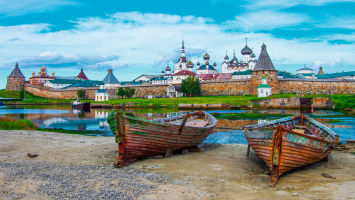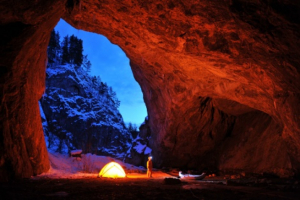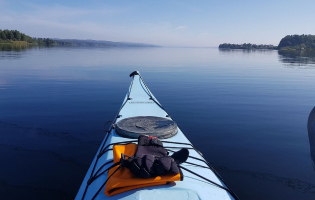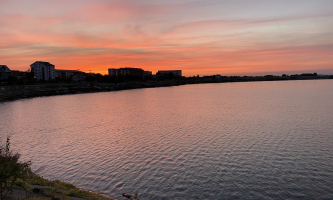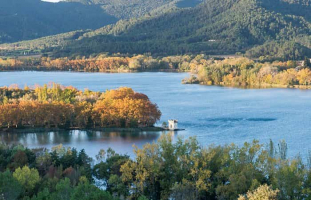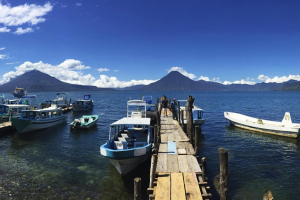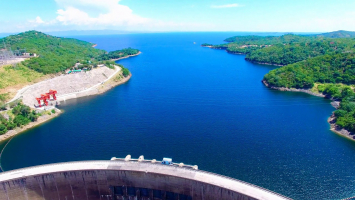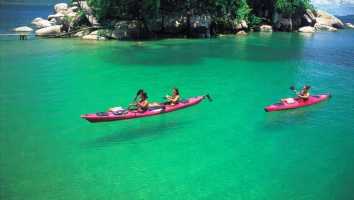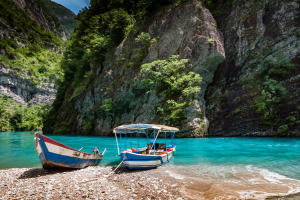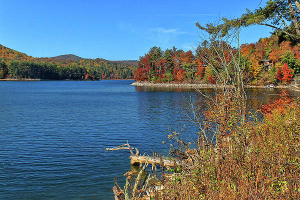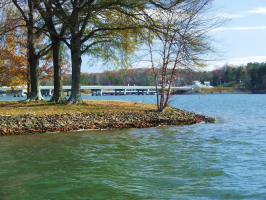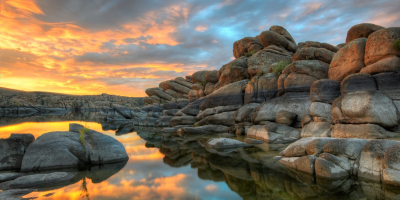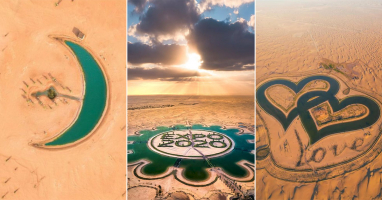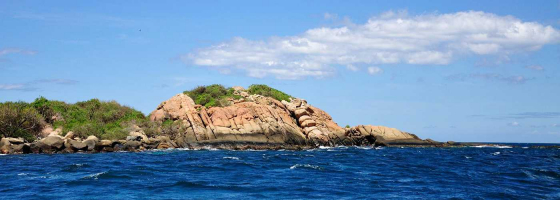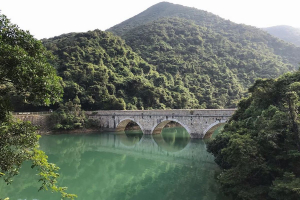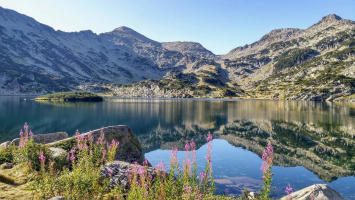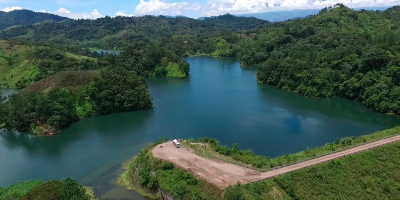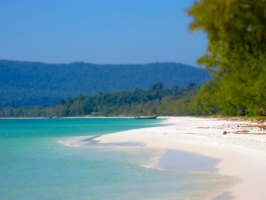Top 10 Most Beautiful Lake in Russia
Russia is one of the largest countries in the world by area. So Russia has extremely rich natural resources along with countless natural beauties. Those sights ... read more...have attracted a lot of domestic and international tourists. Let's explore with Toplist the most beautiful lakes in Russia!
-
One of the most beautiful lakes in Russia is Lake Baikal. Russia's Lake Baikal is a rift lake. It is located in southern Siberia, bordered to the northwest by the federal territory of Irkutsk Oblast and to the southeast by the Republic of Buryatia. The oldest lake in the world and the largest freshwater lake in terms of volume is Lake Baikal. It is also the deepest lake in the world by volume at around 1,642 m in depth. It is the fifth-largest lake in Asia and the easternmost big lake in all of Eurasia. The Angara, Onega, and lower Kurya Rivers - all of which flow into Baikal - also feed the lake.
The lake is known as one of the most beautiful places in the world and its water is of extraordinary purity, making it a UNESCO World Heritage site. A turquoise lake spreads out in the distance, its beaches inhabited by a variety of fauna and vegetation, including thousands of birds and insects, and a backdrop of sapphire blue mountains climb to stunning peaks. It is a central Siberian position also makes it a popular choice for tourists wanting to explore part of the Russian wilderness.
Location: Siberia, Russia
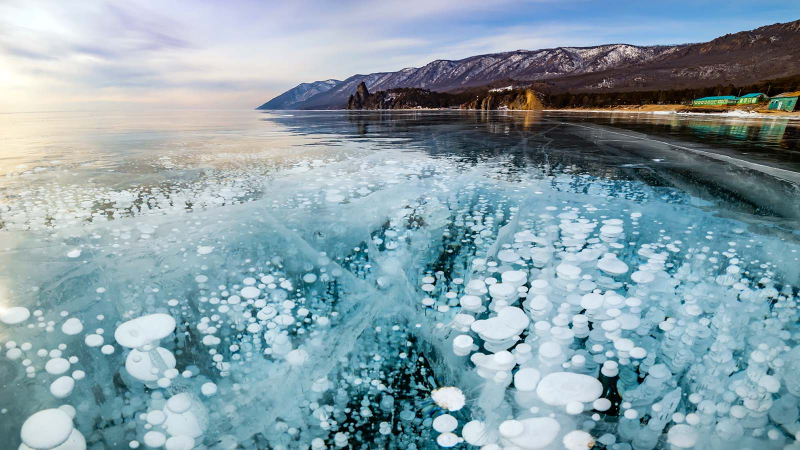
Photo: adventure.howstuffworks.com 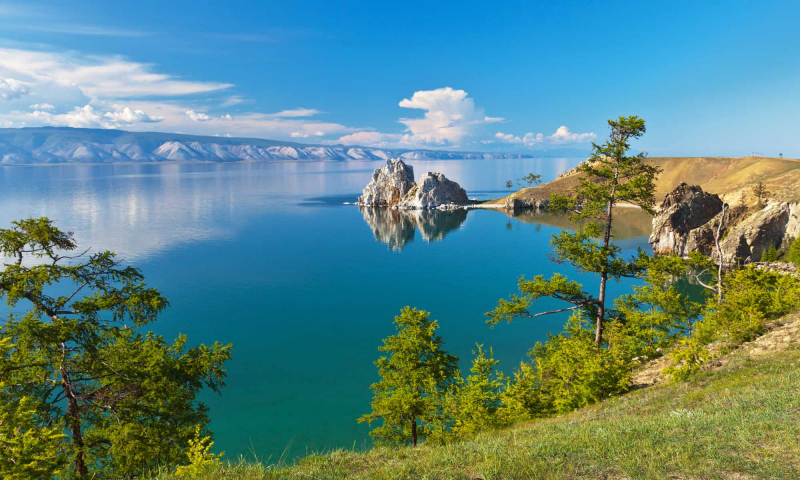
Photo: a-z-animals.com -
In northwest Russia, near Saint Petersburg, in the Republic of Karelia and Leningrad Oblast, lies a freshwater lake known as Lake Ladoga. It is the largest lake wholly in Europe, the second largest lake in the world by area (after Baikal in Russia), and the fourteenth largest freshwater lake overall. The length of the lake gives it an extended shape, and its depth ranges from being relatively shallow at its mouth to about 1,000 meters in the deepest region of the lake. It can freeze for a very long time because of this.
Beautiful Lake Ladoga is surrounded by mountains and woods and has a moderate climate. The rise and fall of the lake's waters is an amazing local phenomenon, and its beaches are strewn with ancient sites and monuments. The cities of Vyborg and Petrozavodsk, as well as a number of other World Heritage Sites, are located on the lake's northern shore. Tourists from all over the world frequently travel there.
This lake is home to a large number of fish. It contains 48 different types of fish. Fishing used to be one of the commercial activities done on this lake. However, this practice has been halted due to overfishing.
Location: Northwestern Russia
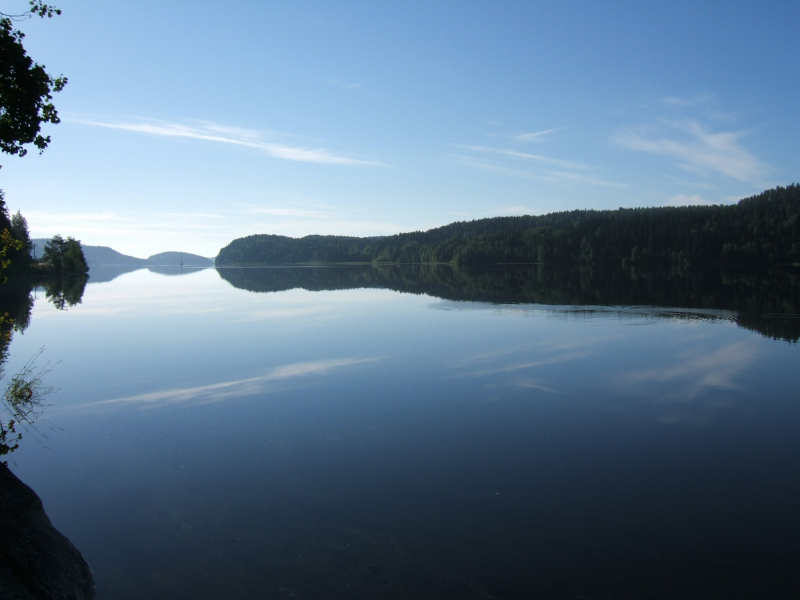
Photo: Wikipedia 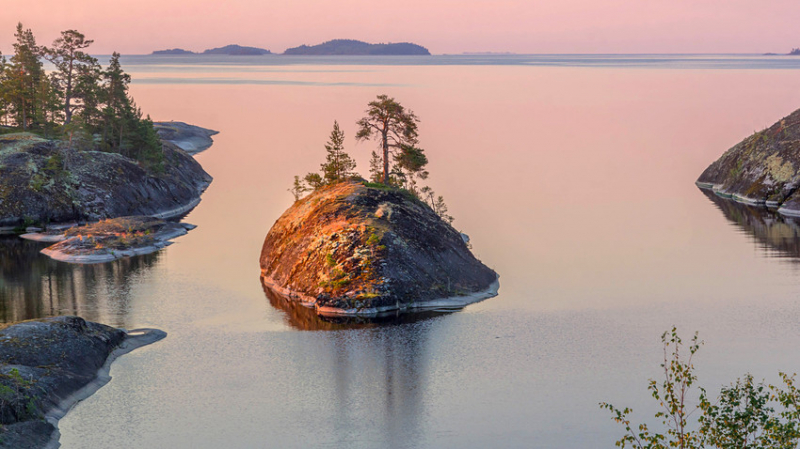
Photo: rbth.com -
Northwestern Russia's Republic of Karelia, Leningrad Oblast, and Vologda Oblast all border the lake known as Lake Onega. It is the second-largest lake in Europe after Lake Ladoga and is slightly smaller than Lebanon. It is part of the Baltic Sea basin. A UNESCO World Heritage site, the eastern sides of the lake are home to over 1,200 petroglyphs from the 4th to the 2nd millennia BC. Petrozavodsk, Kondopoga, and Medvezhyegorsk are the three largest cities near the lake.
About 50 rivers feed the lake, and the Svir drains it. The lake has an area of 3,756 square kilometers and a surface area of approximately 13,675 square kilometers. The lake's shore is home to Mt. Lebyazhsky, which is the lake's highest point. The Karelian term "elävä," which means "alive water," is where the lake gets its name.
Russia's northwest includes the Republic of Komi, which shares a border with Finland. The area becomes highly crowded in the summer because Lake Onega is a well-liked vacation spot. The narrow Komi-Karjala is a really interesting region, and there are lovely national parks, lakes, and a lot of nature and woodland all around the lake.
Location: northwestern Russia
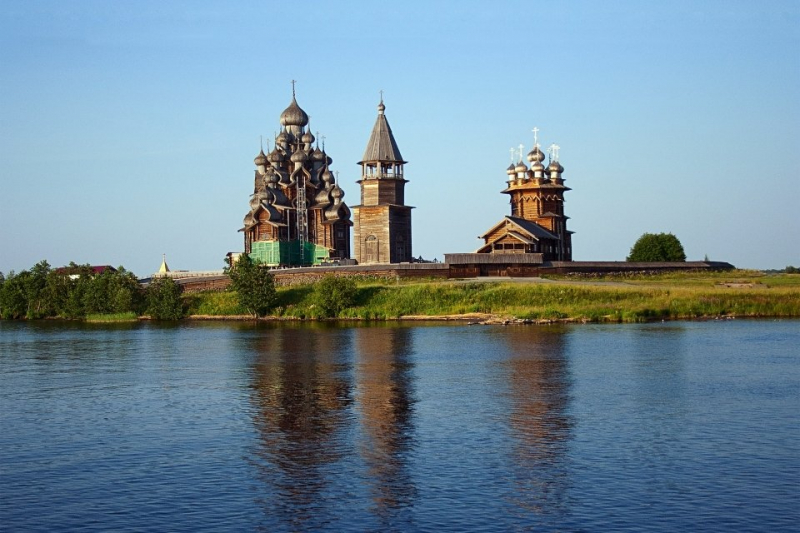
Photo: easyvoyage.co.uk 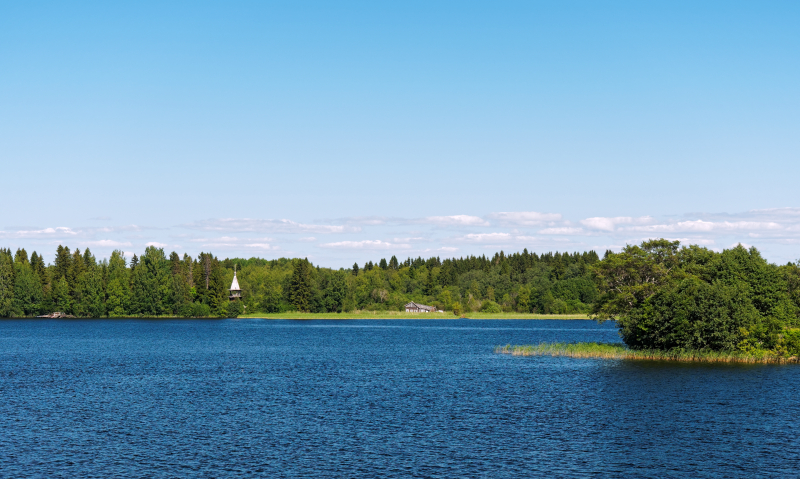
Photo: commons wikimedia -
On the border between Heilongjiang province, Northeast China, and Primorsky Krai, Russia, is Lake Khanka, also known as Lake Xingkai. At 20,000 square kilometers, it has the second-largest surface area of any lake in Russia. It is the most profound lake in the Russian Far East, reaching a maximum depth of 11 meters. The Khanka and Malykhanka rivers feed the lake, which serves as the primary water source for the area.
Both stunning and intriguing, the Primorsky Krai is a territory. One of the most popular tourist spots in the area is Lake Khanka. It is the biggest lake in Primorsky Krai, after Lake Baikal, the second biggest lake in Siberia, and the third biggest lake in Asia.
One huge lake and one smaller lake make up Khanka Lake; they are separated by a sand hill. The hillside's trees are gracefully lovely and lushly green. Fish are swimming about in the small lake, which is serene and quiet. Birds are also flying. The lake occasionally has some sailboats cruising about. The larger lake's water is completely mist-covered, and it appears to blend into the sky. It was referred to as the emerald of north China because of its untamed water. Khanka Lake is incredibly colorful in the autumn. If you look out from a hilltop, you will see green water, white clouds in the sky, crimson autumnal foliage, and trees right away.
Location: Primorsky Krai, Russia
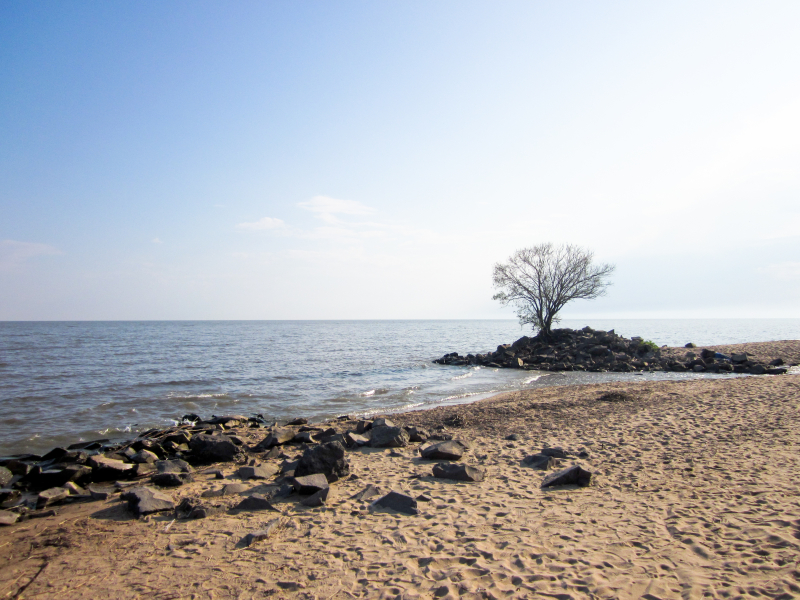
Photo: commons wikimedia 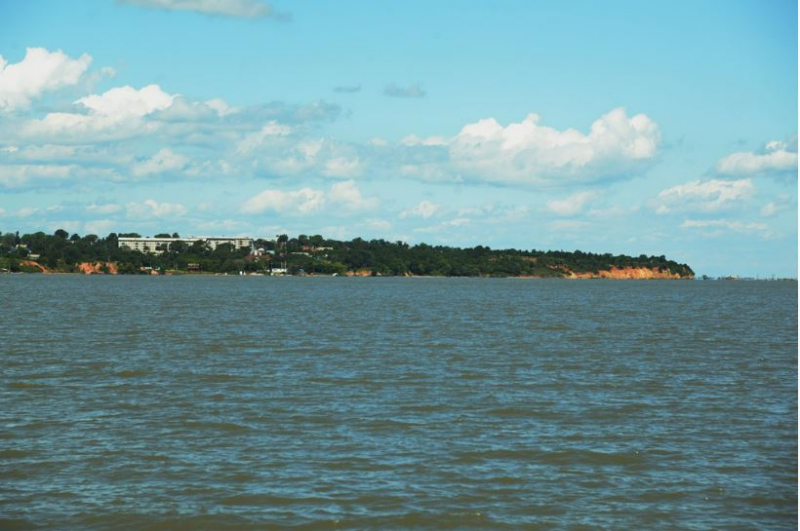
Photo: dalintourist.com -
The largest transnational lake in Europe, Lake Peipus, is located between Estonia and Russia. After Lake Ladoga and Lake Onega (in Russia north of Saint Petersburg), Lake Vänern (in Sweden), and Lake Saimaa, the lake is the fifth-largest in Europe (in Finland). The lake is a relic of recent ice ages when water would frequently pool at the base of massive, permanent arctic ice sheets. It has a surface area of 3,555 km2, an average depth of 7.1 m, and a maximum depth of 15 m.
Mustvee, Kallaste, and Gdov are a few of the minor communities that line the banks. The major city, Pskov, is located 10 kilometers from the lake on the Velikaya River. Fishing, the transportation of products and people, and tourism excursions are all supported by well-developed ship navigation. Many tourist camps and sanatoriums offer tourism and recreational activities along the scenic lakeshores. Peipus had a reputation as "The Forgotten Lake" because of how rarely people visited there. But now, the lake and the region around it are well-liked vacation spots. From afar, from Narva's cliffs, or when strolling by the lake, you may view the lake. Lake Peipus is one of the most beautiful lakes in Russia.
Location: Estonia, Russia
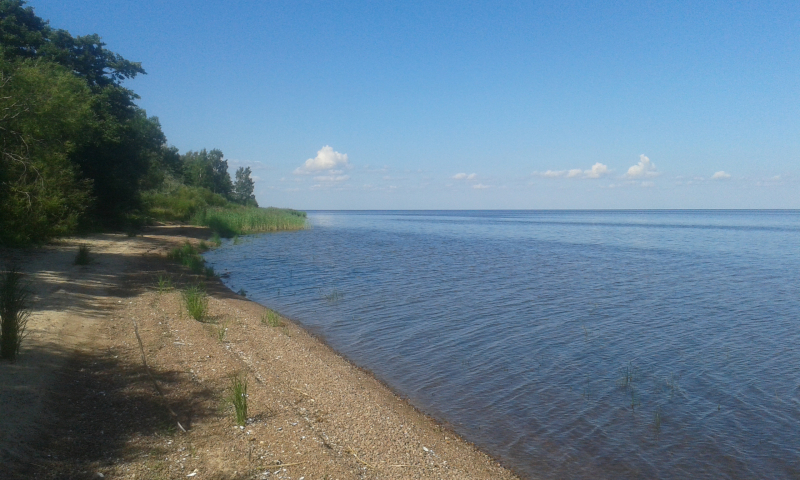
Photo: Wikimedia commons 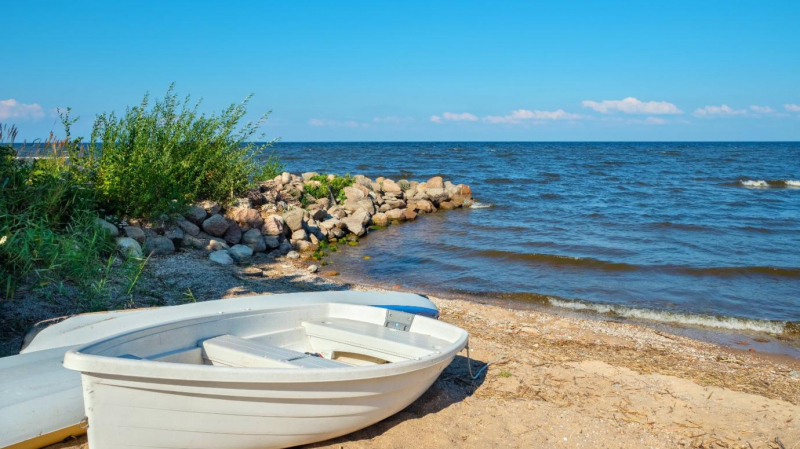
Photo: culture.ec.europa.eu -
A heavily salinized lake called Uvs Lake is located in the Uvs Nuur Basin, a tiny portion of which is in Russia. With a surface area of 3,350 km2 and an elevation of 759 m above sea level, it is the largest lake in Mongolia by area. The Tuva Republic of the Russian Federation is where the lake's northeastern tip is located. Ulaangom is the largest village next to the lake.
This small, extremely salty body of water is all that's left of a much larger, saltier sea that formerly spanned a far wider area.
You can take a walk in the wilderness, go scuba diving, or go on a night safari. You can also take a helicopter flight to the nicest beaches or tour the historic Issyk Kul burial mounds.
A stunning piece of water in a tough environment is the Uvs Lake. In the summer it is 4°C, but in the winter it is - 5°C. In the winter, snow mostly covers the lakeside. The lake is a well-liked tourist destination because the region is full with scenic natural areas and interesting historical buildings.
Location: Mongolia and Russia
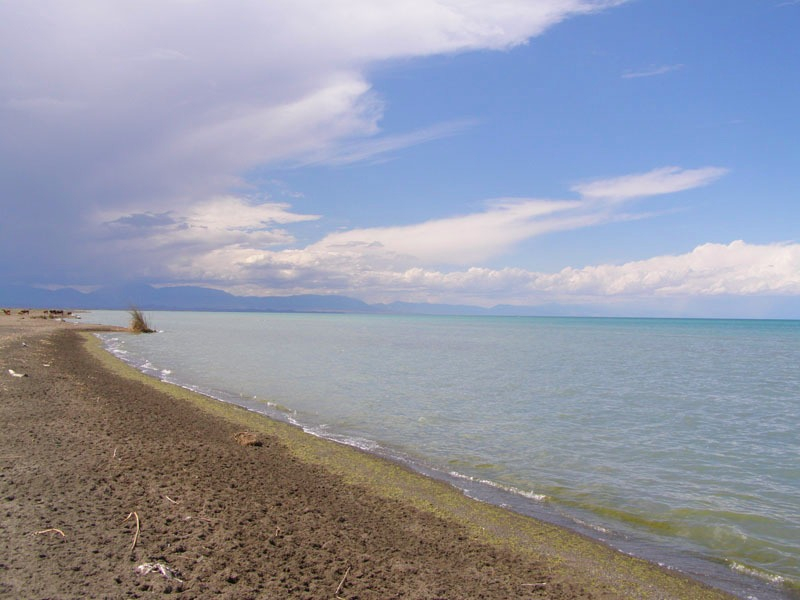
Photo: mongolia-trips.com 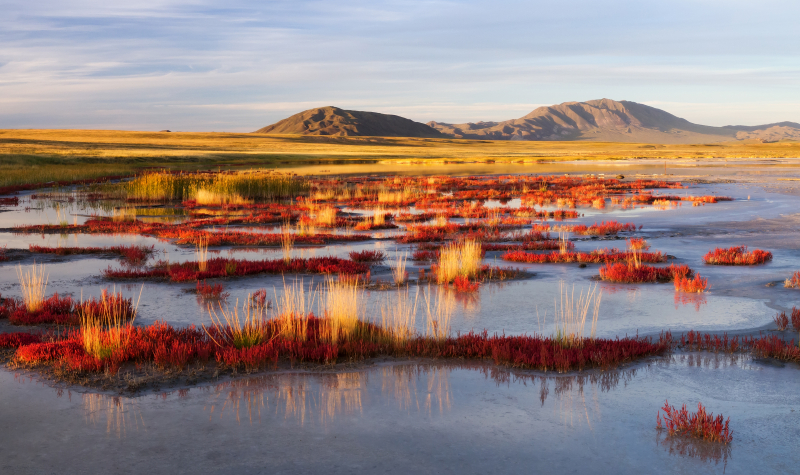
Photo: Wikipedia -
One of the biggest lakes in Russia is Lake Chany. It's in the Baraba steppe region. The lake's water level varies from season to season and year to year and is shallow, hyposaline, and hypotonic. The lake's depth ranges from 1-2 meters in most spots to 8 meters in some. The Small Chany and Yarkul lakes are connected to Lake Chany to the south. Lake Tandovo is located north of its northeastern end.
The lake is surrounded by a variety of ecosystems, including salt marshes, birch and aspen forests, and wetlands. Particularly crucial for Siberian migrating birds, Lake Chany is recognized as a Ramsar Site of International Importance.
There aren't many tourist destinations in Siberia as lovely as Lake Chany which is one of the most beautiful lakes in Russia. This location, which is in the Novosibirsk oblast, is where several campgrounds and resorts are situated. These can be found in forests, rivers, lakes, or even yurts. The Chany Museum, which records the local history and houses more than 20,000 archeological objects, including more than 12,000 icons, is another notable attraction in the region.
Location: Novosibirsk Oblast, Russia
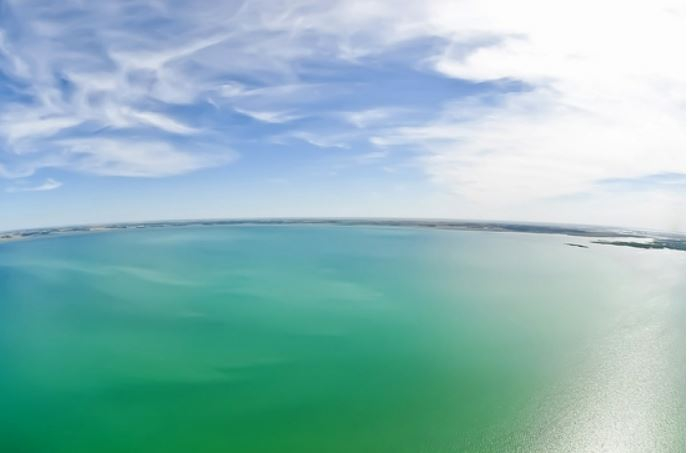
Photo: russiatrek.org 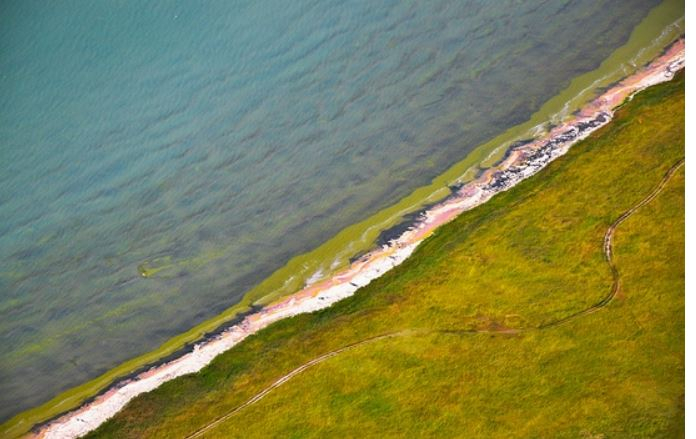
Photo: russiatrek.org -
With a depth of up to 325 meters, Lake Teletskoye is the biggest lake in Russia's Altai Republic and Altai Mountains. The lake is 78 km long and 5 km wide, and it is located at the intersection of the Sailughem Mountains and the Western Sayans at a height of 434 m above sea level. The lake is surrounded by the mountain ranges Korbu and Al-tyntu. Despite having a 233 km2 surface area, the lake's depth (325 m; 1,066 ft) means that it holds at least 40 km3 of fresh water. The average annual variation in water level is thought to be 348 sm. The lake has a remarkable degree of clarity, with the water's visibility ranging from six to fourteen meters.
The lake is well-known for having a thriving fish population, which includes carp, tench, burbot, European perch, European eel, and pink and silver perch. The lake is frequently highlighted in national and worldwide media as a site to see due to its reputation for having a large population of brown bears.
One of Russia's most stunning and enigmatic lakes is Lake Teletskoye. It is one of the deepest lakes in the world at just 156 meters deep, making it the deepest lake in Russia. It is situated in the Altai Republic and is also the furthest away. The lake, which is close to Teletskoye town and about 90 kilometers to the west of Salekhard, is a well-liked tourist attraction.
Location: Altai Republic, Russia
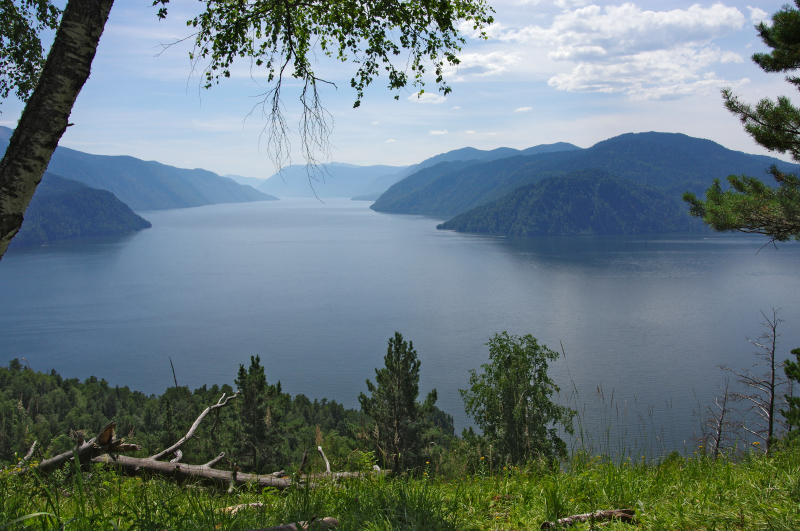
Photo: Wikipedia 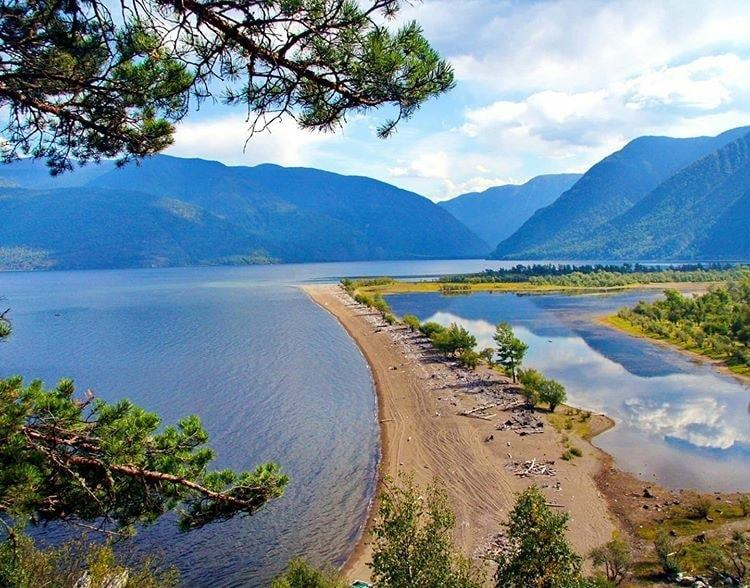
Photo: Facebook.com -
A sizable lake called Lake Ilmen is located in Russia's Novgorod Oblast. It was a crucial element of the medieval trade route connecting the Varangians and the Greeks, making it a lake of historical significance. Six kilometers below the lake's outflow sits the city of Novgorod, a significant trading hub along the route. The lake has a significant historical role in the region as it was a component of the Trade Route from Varangians to Greeks. It is a well-known tourist destination for both Russians and visitors from other countries.
One of the most popular destinations in the nation is the scenic Lake Ilmen in the Novgorod Oblast. The lake is the ideal location for some recreation and sport because the waters are so clear and transparent. For those who enjoy watersports, there are many different sorts of fishing and beautiful locations. In contrast, those who wish to enjoy the opposite side of the lake can view the lovely cliffs in the distance, the historic Novgorod-Novgorodsk Kremlin, and even the museum. Those who want to unwind to the sounds of nature and birds chirping can select the lovely lake vista. Lake Ilmen is one of the most beautiful lakes in Russia.
Location: Novgorod Oblast, Russia
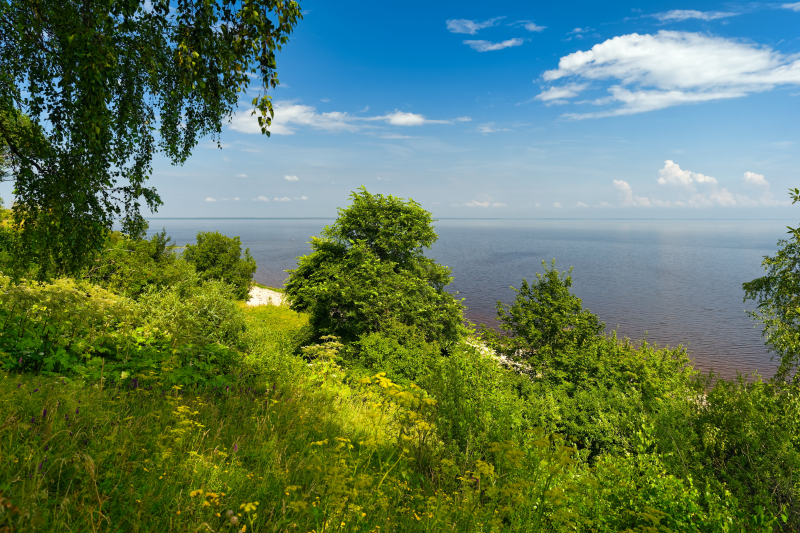
Photo: Wikimedia commons 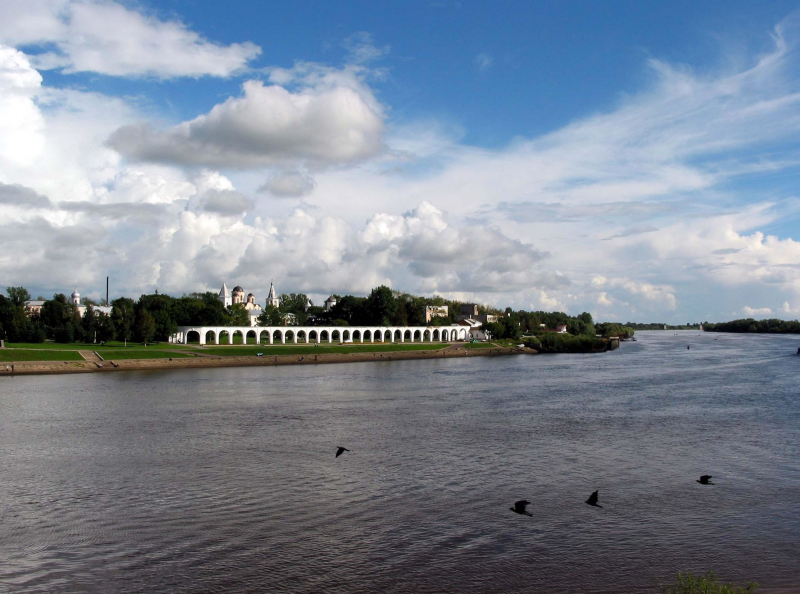
Photo: asisbiz.com -
A 150 km southeast of Chaunskaya Bay, in the Chukotka Autonomous Okrug in northeast Siberia, is an impact crater lake known as Lake El'gygytgyn. In Chukchi, the word "Elgygytgyn" means "white lake". Scientists are particularly interested in the lake since glaciers have never covered it. This has made it possible for 400 m of sediment to accumulate at the lake's bottom without interruption, preserving data on past climatic change.
Elgygytgyn Lake has been getting smaller ever since the Little Ice Age ended. Using radar data to monitor changes in the lake since the mid-1980s, researchers from the Institute of Hydrometeorology and Glacial Geology in Moscow have come to that conclusion. Elgygytgyn is located on the northeastern Chukchi Peninsula of the Russian Federation. It is one of the biggest lakes in the Russian Federation and the largest lake in the Chukotka area.
The stunning Elgygytgyn Lake is a glacier-fed tarn located in Northeast Siberia's Chukchi Peninsula. It is the sole remaining natural lake in the area and a well-liked tourist site. The lake is a well-liked location for fly-fishing in the summer and is also a hub of communal and traditional Chukchi life.
Location: Chukchi Peninsula, northeast Siberia, Russia
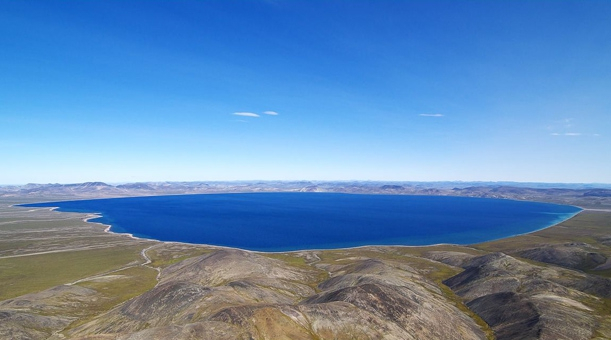
Photo: Wikipedia 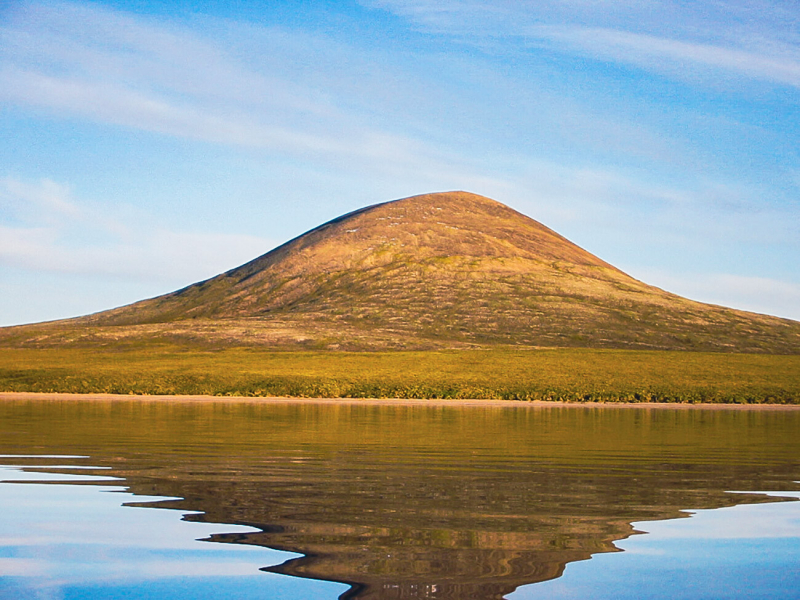
Photo: rbth.com












